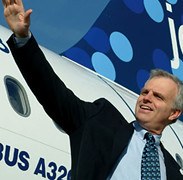
On March 23, JetBlue Airways accepted delivery of its 100th Airbus A320 aircraft, complete with a one-of-a-kind 100-themed blue livery, giving the airline the world's largest fleet of A320 aircraft. But what could have been a press conference about the growth and success of a low-cost, low-fare, value-oriented business model turns into more of the same: why talk about leg room when you can talk about being sorry?It...



























